Abstract
The relationship between malic acid production and carbon assimilation was examined in the submerged aquatic Crassulacean acid metabolism (CAM) plant, Isoetes howellii Engelmann. Under natural conditions free-CO2 level in the water was highest at 0600 hours and 14CO2 assimilation rates in I. howellii were also highest at this time. After 0900 hours there was a similar pattern in (a) rate of free-CO2 depletion from the water, (b) reduction of carbon assimilation rates, and (c) rate of deacidification in leaves. Rates of daytime deacidification increased under CO2-free conditions and as irradiance intensity increased. Nighttime CO2 uptake was estimated to contribute one-third to one-half of the total daily gross carbon assimilation. CO2 uptake, however, accounted for only one-third to one-half of the overnight malic acid accumulation. Internal respiratory CO2 may be a substrate for a large portion of overnight acid accumulation as leaves incubated overnight without CO2 accumulated substantial levels of malic acid. Loss of CAM occurred in emergent leaf tips even though submerged bases continued CAM. Associated with loss of CAM in aerial leaves was an increase in total chlorophyll, a/b ratio, and carotenoids, and a decrease in leaf succulence. δ13C values of I. howellii were not clearly distinguishable from those for associated non-CAM submerged macrophytes.
Full text
PDF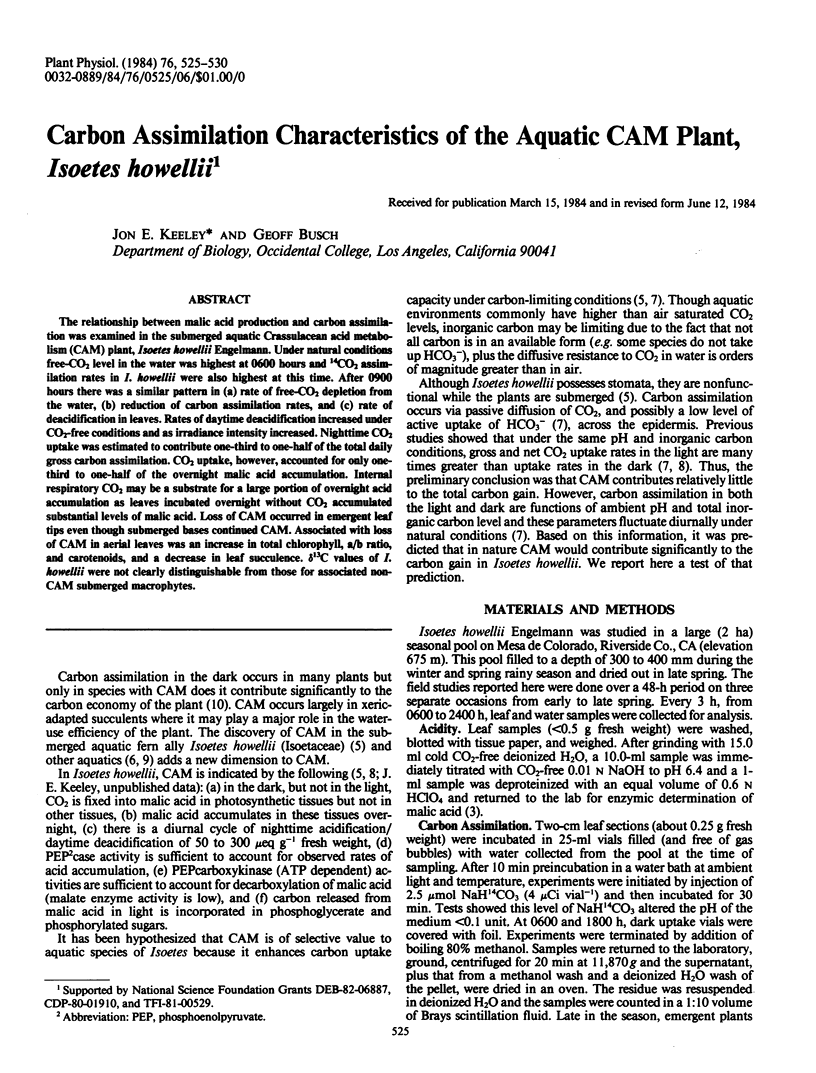
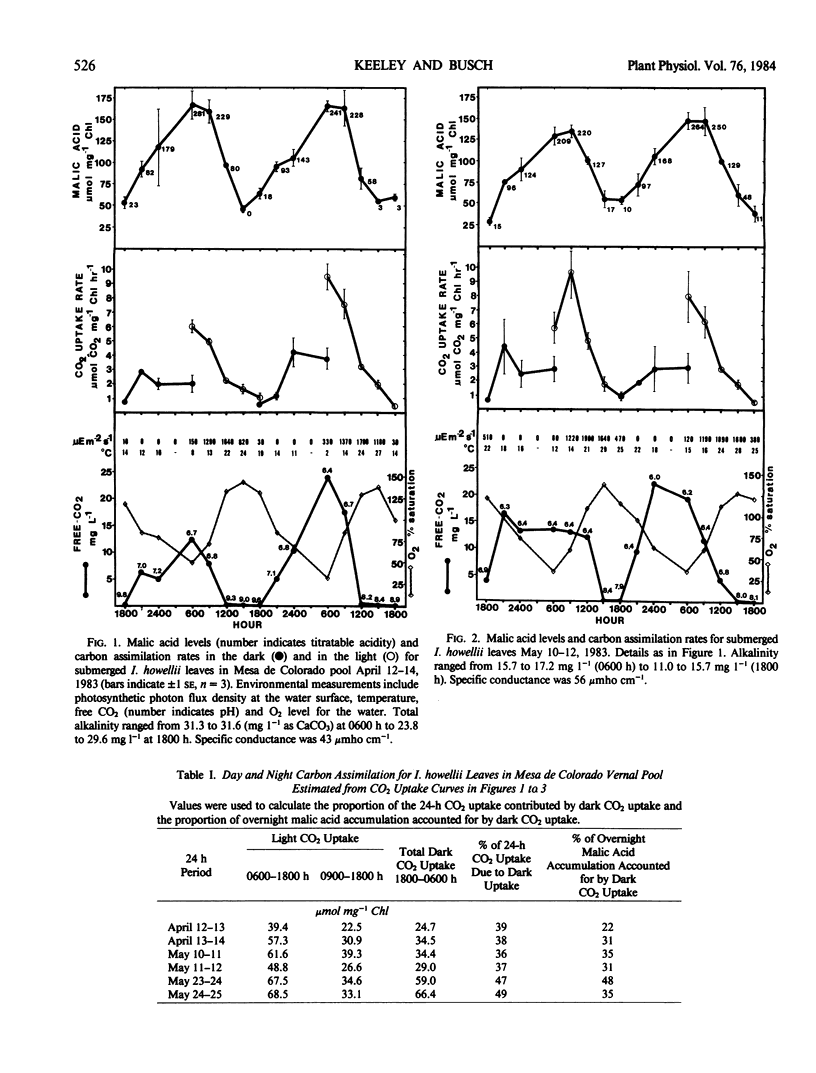
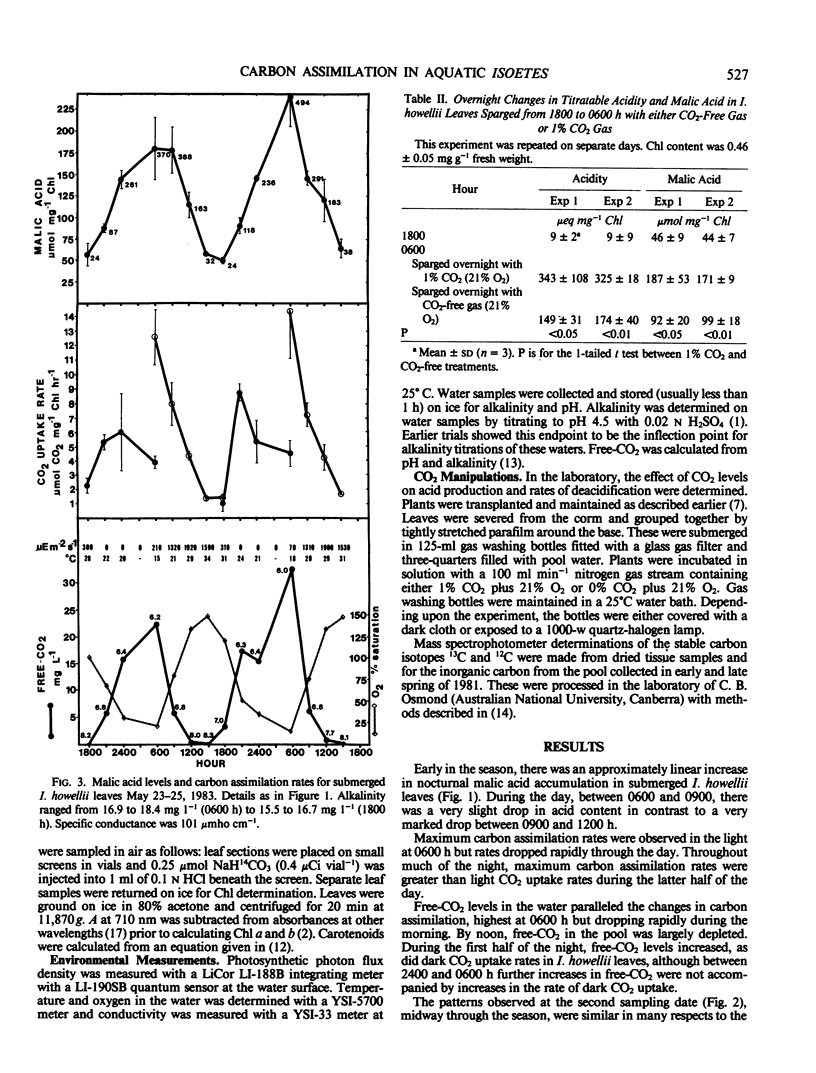
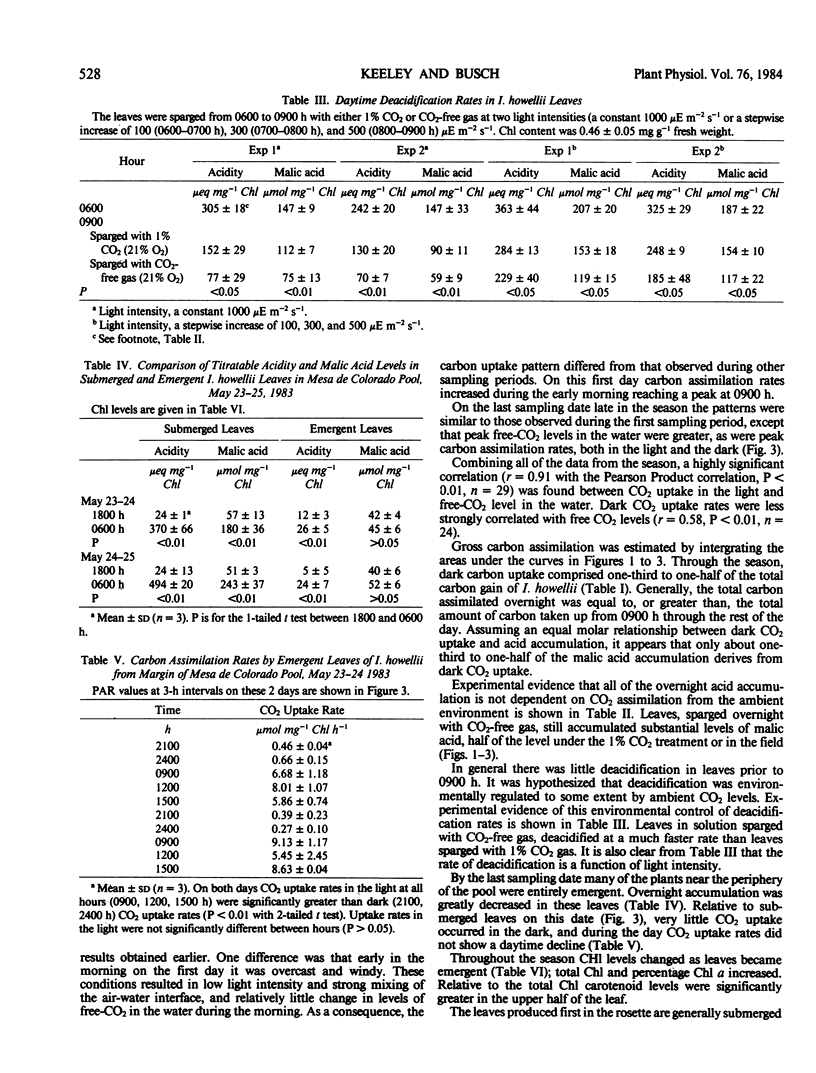
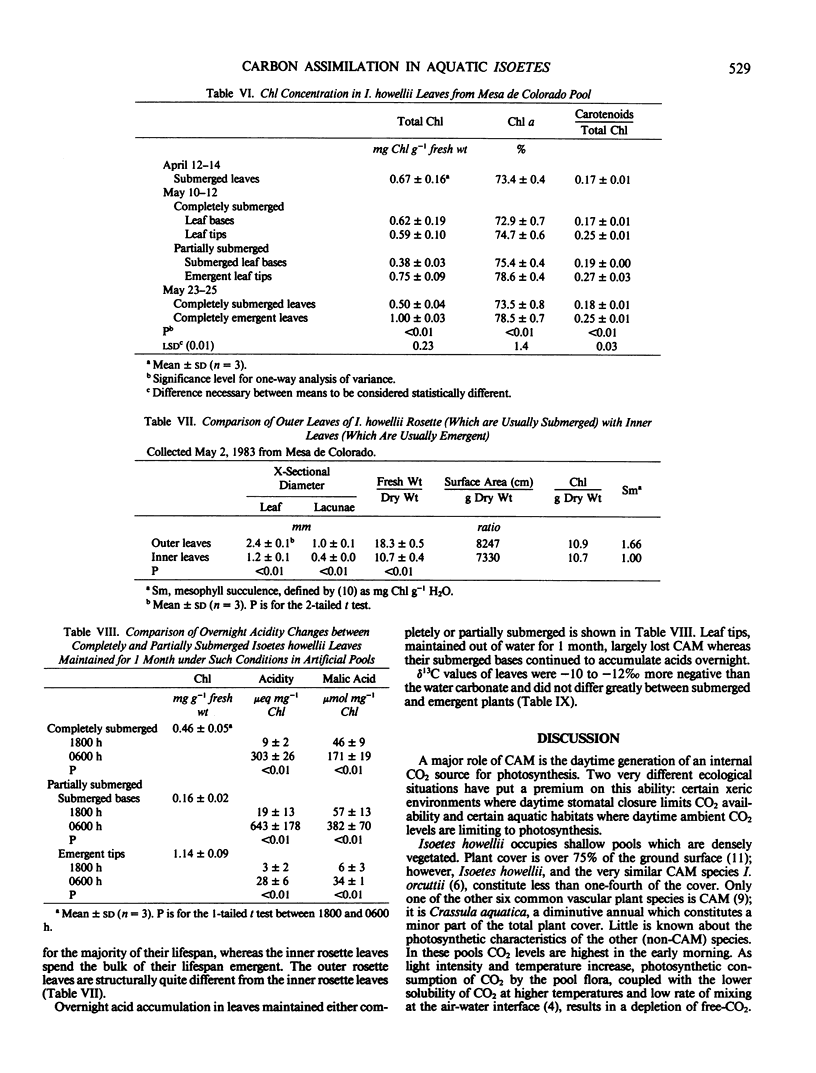
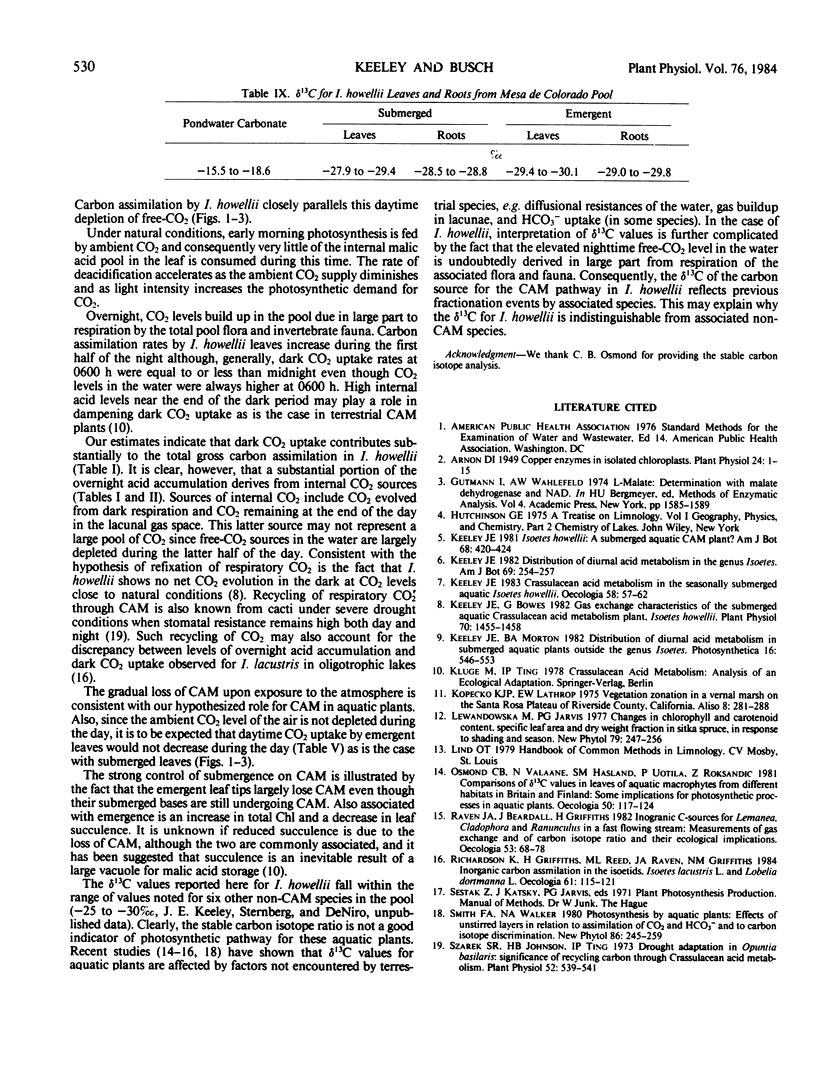
Selected References
These references are in PubMed. This may not be the complete list of references from this article.
- Arnon D. I. COPPER ENZYMES IN ISOLATED CHLOROPLASTS. POLYPHENOLOXIDASE IN BETA VULGARIS. Plant Physiol. 1949 Jan;24(1):1–15. doi: 10.1104/pp.24.1.1. [DOI] [PMC free article] [PubMed] [Google Scholar]
- Keeley J. E., Bowes G. Gas Exchange Characteristics of the Submerged Aquatic Crassulacean Acid Metabolism Plant, Isoetes howellii. Plant Physiol. 1982 Nov;70(5):1455–1458. doi: 10.1104/pp.70.5.1455. [DOI] [PMC free article] [PubMed] [Google Scholar]
- Szarek S. R., Johnson H. B., Ting I. P. Drought Adaptation in Opuntia basilaris: Significance of Recycling Carbon through Crassulacean Acid Metabolism. Plant Physiol. 1973 Dec;52(6):539–541. doi: 10.1104/pp.52.6.539. [DOI] [PMC free article] [PubMed] [Google Scholar]


